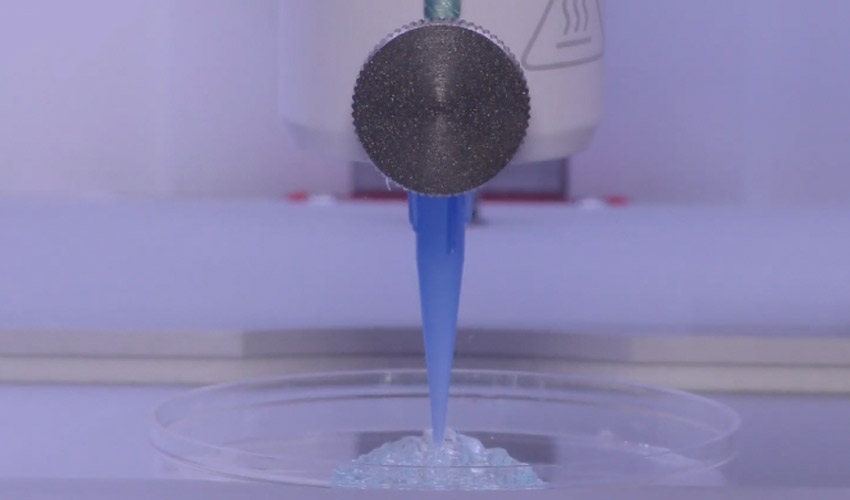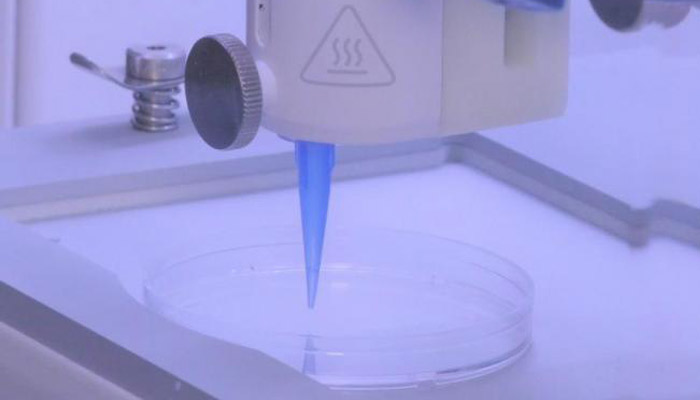A team of scientists bioprinted a vascularized skin graft

Researchers at Rensselaer Polytechnic Institute in New York and Yale Medical School have bioprinted vascularized skin tissues, which were successfully tested on a mouse. Apparently, the skin managed to connect to the animal’s blood vessels. For the medical sector, this advance could well solve the challenges associated with the rejection of grafted tissue and thus considerably facilitate all skin grafts.
3D bioprinting of skin is not new in the medical sector; many researchers are looking to reproduce skin tissues whether to treat wounds and burns, serve reconstructive surgery, or even for astronauts. On the other hand, few projects have attempted to include blood vessels in them, a method that could allow the patient to assimilate the grafted tissue much more quickly. This is what this team of American researchers, led by Pankaj Karande, associate professor of chemical and biological engineering, has done. He explains: “At the moment, everything that is available as a clinical product looks more like a sophisticated dressing. It allows accelerated wound healing, but eventually falls off. It never really integrates into the host cells.“

The researchers used a bioprinter to create their vascularized skin tissue
The process of creating bioprinted vascularized skin
The researchers explain that they have combined cells from human blood vessels (endothelial cells and human pericyte cells) with other materials, including collagen of animal origin and structural cells, to make a bioink. A bioprinter, CELLINK’s Bio X to be more precise, then deposited it layer by layer, and the cells began to communicate with each other and form a vascular structure within a few days.
To test the viability of this bioprinted vascularized skin sample, it was transplanted in a mouse. The researchers observed that the vessels of the printed skin were able to communicate with the blood vessels of the mouse, indicating that a transfer of blood and nutrients was possible and therefore that the graft could be kept alive. The integration of blood vessels has also enabled metabolites to be removed. Deepak Vashishth, Director of the Centre for Biotechnology and Interdisciplinary Studies at Rensselaer, concludes: “This significant development highlights the vast potential of 3D bioprinting in precision medicine, in which solutions can be adapted to specific situations and ultimately to individuals.”
Ultimately, this bioprinted 3D vascularized skin could help patients with specific problems such as diabetes or ulcers. More serious cases, such as burns, will require a little more work, as researchers must address nerve and vascular damage. We are still far from seeing these skin tissues grafted into a human but it is a good start! You can find the entire study published in Tissue Engineering Part A HERE.
What do you think of this new research in bioprinting? Let us know in a comment below or on our Facebook and Twitter pages if the listing above was useful! Don’t forget to sign up for our free weekly Newsletter, with all the latest news in 3D printing delivered straight to your inbox!






